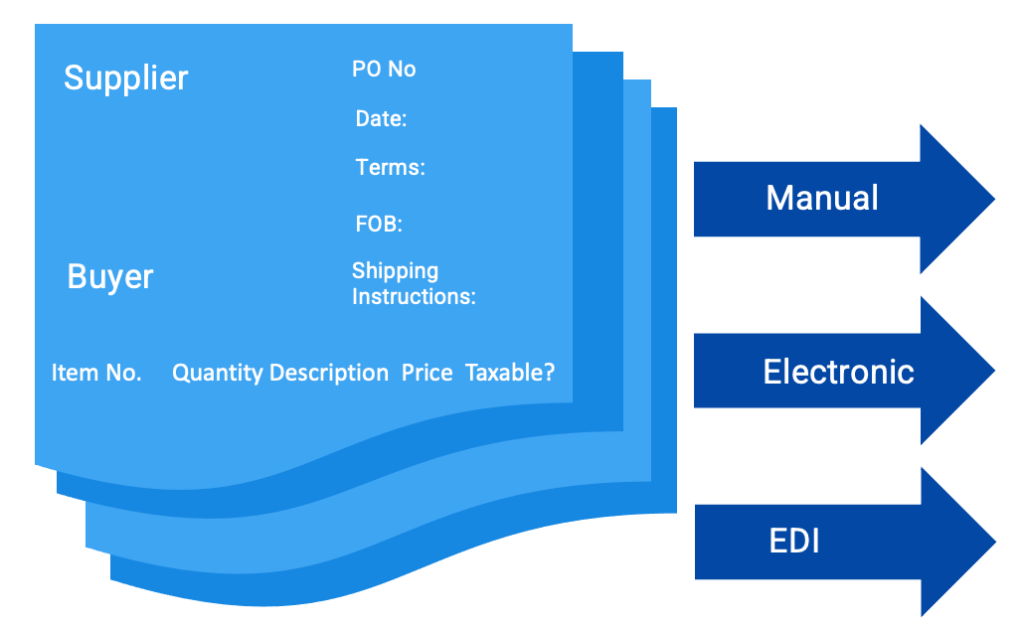Step 4: Issuing an Agreement
The fourth step in the purchasing cycle is to issue an agreement. A purchase order or other agreement is created and sent to the supplier. This process and method of transmission could be manual, electronic, or through electronic data interchange (EDI).
The various departments that need a copy of the agreement include:
- Purchasing – to manage the order and possibly expedite the item
- Requestor – to acknowledgement part or service is ordered
- Traffic – to arrange incoming transportation
- Receiving – to transact when part or service arrives
- Quality – to be notified what items are to be inspected
- Accounts Payable – to process payment
Other types of agreements include contracts and statements of work (SOW) or service level agreements (SLA).
The agreement is missed during the purchasing process regardless if tactical purchasing or strategic sourcing is used.
Step 5: Following Up
Suppliers will be contacted to expedite or de-expedite parts or services, or change orders can be requested regarding quantity or delivery date. Companies might request the supplier issue an advanced ship notice.
Step 6: Accepting Goods
Close attention must be paid when the parts arrive. The receiving department should possess a copy of the agreement to verify the proper parts and quantities are received in a timely manner and at the designated location.
Companies may choose to timestamp the bill of lading upon the truck’s arrival, especially if the requested delivery is scheduled for a specific date and time. It is crucial to have a packing slip for each box to accurately identify its contents. However, it is important to ensure that all the details are verified before any receiving report is overlooked. The receiving report can be generated electronically and serves as a notification to the relevant individuals and departments involved.
Step 7: Approving Payment
The accounts payable department will verify the purchase order and reconcile it with the invoice received from the supplier. The agreed-upon payment terms will also be confirmed before releasing the payment. The payment process can be either manual or carried out through electronic funds transfer (EFT).

